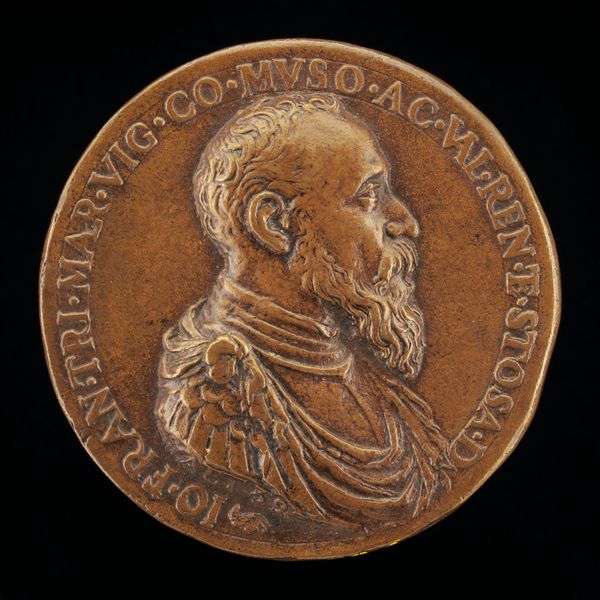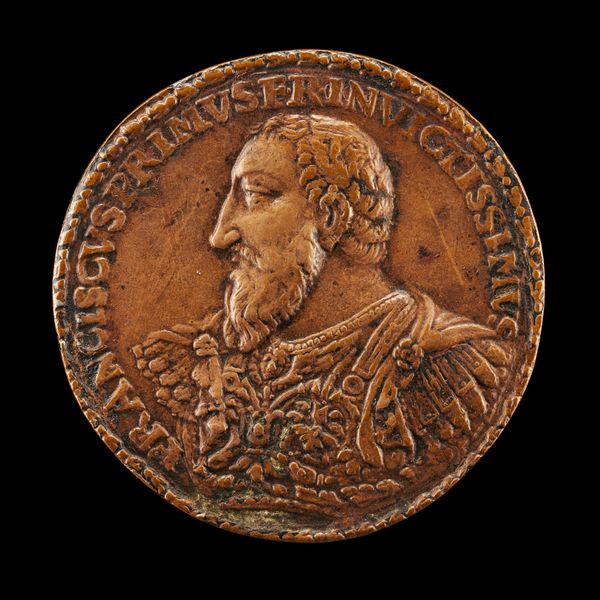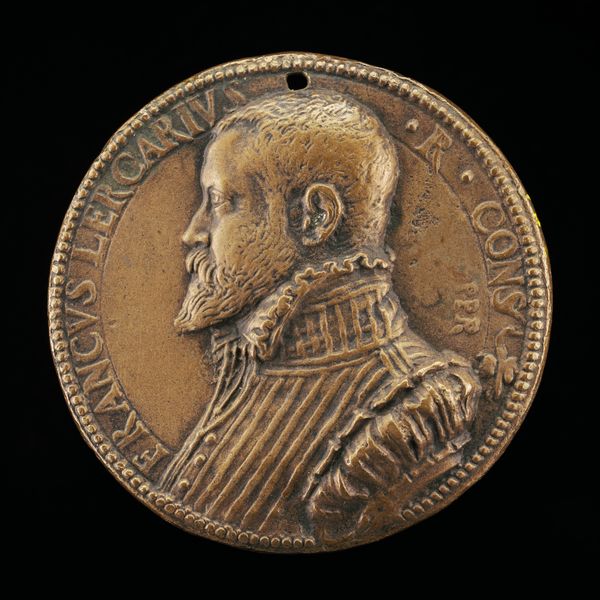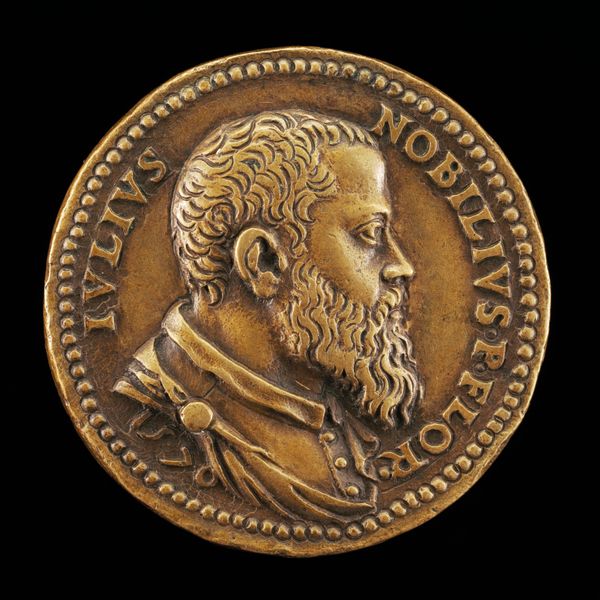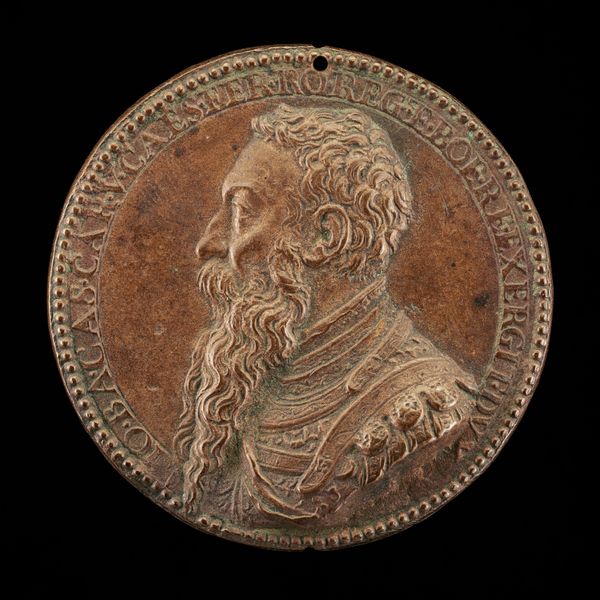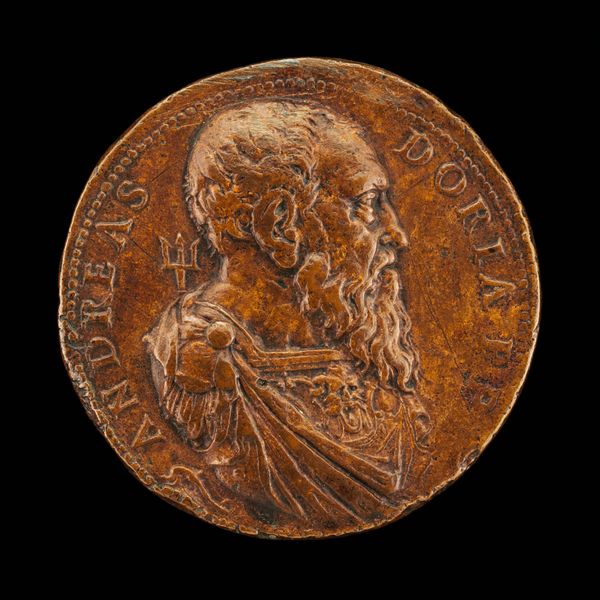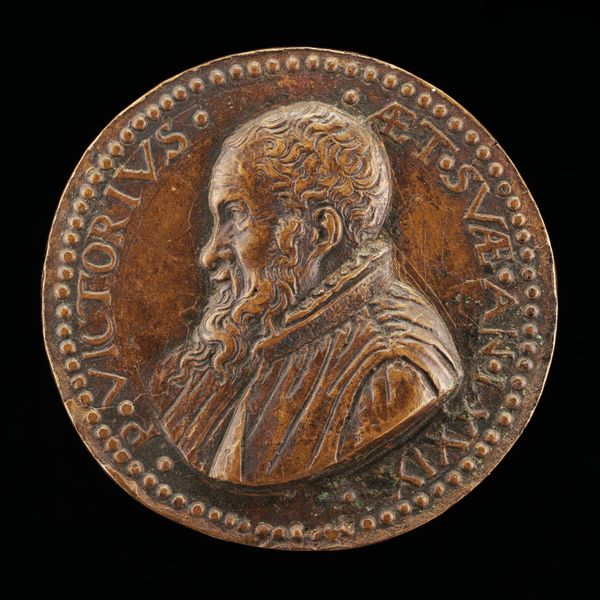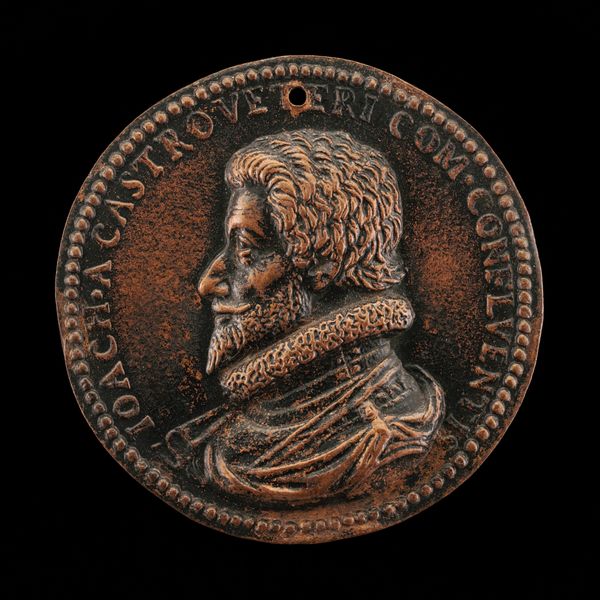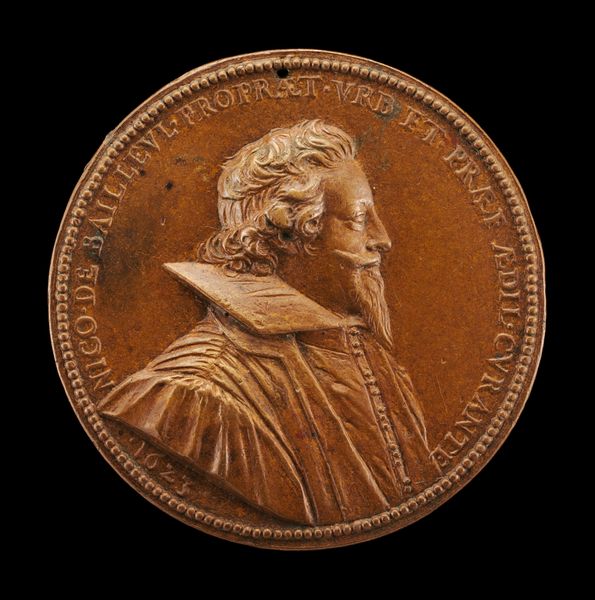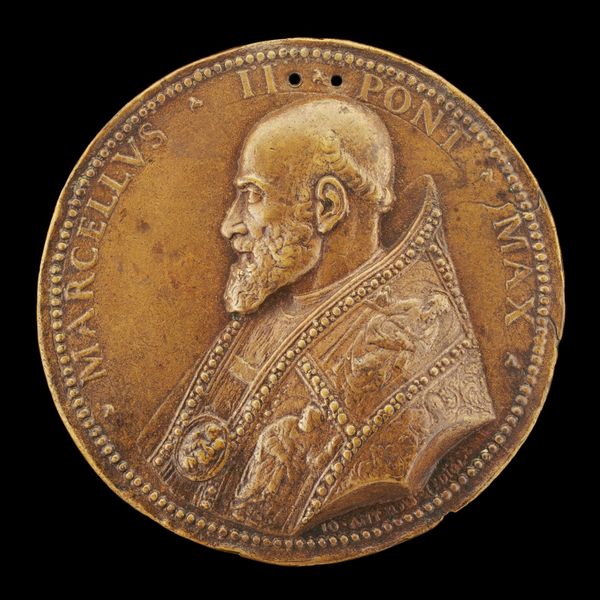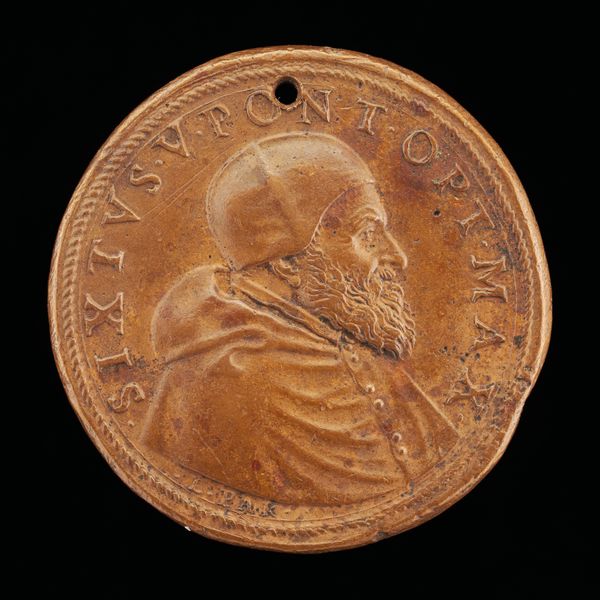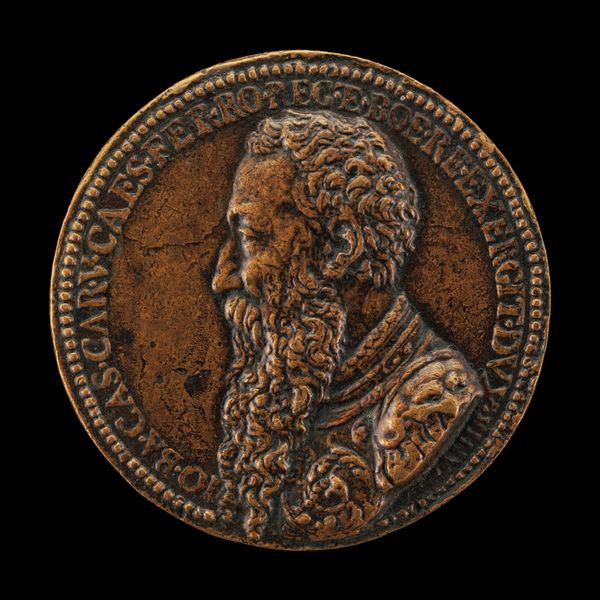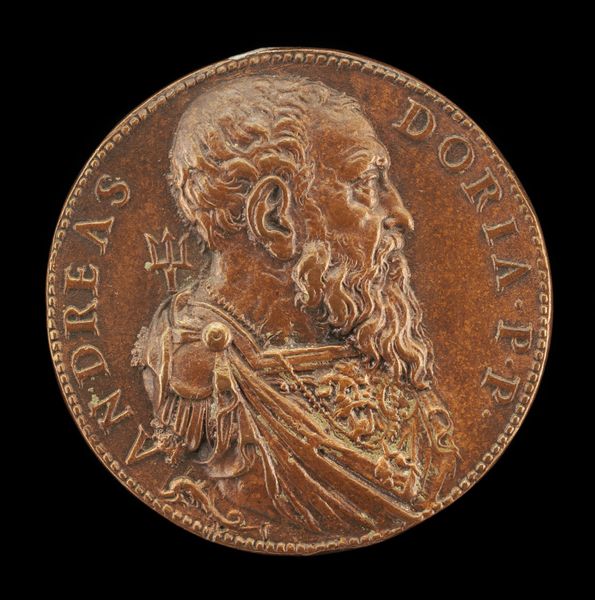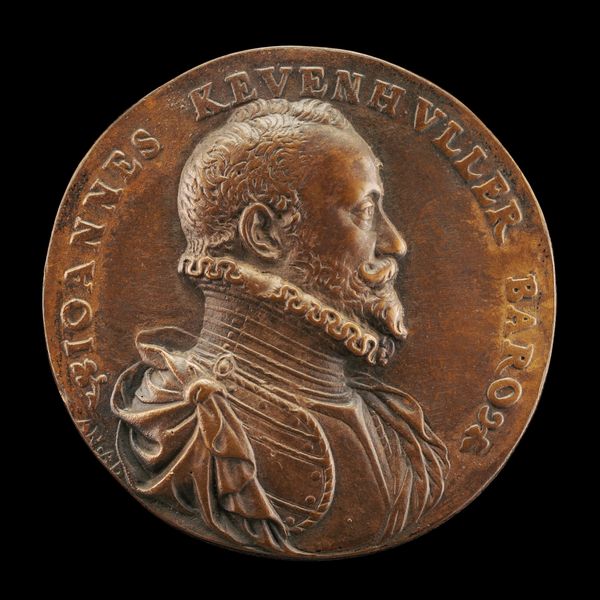![Henri IV, 1553-1610, King of France 1589 [obverse] by Philippe Danfrie II](/_next/image?url=https%3A%2F%2Fd2w8kbdekdi1gv.cloudfront.net%2FeyJidWNrZXQiOiAiYXJ0ZXJhLWltYWdlcy1idWNrZXQiLCAia2V5IjogImFydHdvcmtzLzMxOGZiYzFkLTA0MWItNGUzMS1hNmVlLTVjNTZkZjViOTgxZi8zMThmYmMxZC0wNDFiLTRlMzEtYTZlZS01YzU2ZGY1Yjk4MWZfZnVsbC5qcGciLCAiZWRpdHMiOiB7InJlc2l6ZSI6IHsid2lkdGgiOiAxOTIwLCAiaGVpZ2h0IjogMTkyMCwgImZpdCI6ICJpbnNpZGUifX19&w=3840&q=75)
metal, sculpture
#
portrait
#
metal
#
sculpture
#
mannerism
#
11_renaissance
#
sculpture
Dimensions: overall (diameter): 4.8 cm (1 7/8 in.) gross weight: 39.8 gr (0.04 kg) axis: 12:00
Copyright: National Gallery of Art: CC0 1.0
Editor: Here we have a bronze medal depicting Henri IV, King of France, created in 1594 by Philippe Danfrie II. There's a somber feeling about it, perhaps because of the profile view and the rigid formality of the king’s attire. What aspects of this artwork stand out to you? Curator: The most striking aspect to me is how this seemingly simple portrait speaks volumes about power and legitimacy during a time of intense political and religious turmoil. Consider Henri IV's rise to power: a Protestant king inheriting a largely Catholic country. This medal, issued relatively early in his reign, served as a form of propaganda, an attempt to solidify his image as a rightful ruler. The deliberate inscription, "HENRICVS IIII FRANCOR ET NAVAR REX," translates to Henry IV, King of France and Navarre—it's not just a statement of fact, but a carefully crafted declaration of authority. What do you observe in his expression, and how might that contribute to the message being conveyed? Editor: I notice he’s not smiling; there’s a stoicism there. It’s like he's saying, "I am the king, and I am serious about it." It also appears on coinage of the time and represents political power and stability. It seems these kinds of sculpted pieces like this are for wealthy people. Curator: Precisely. Medals like these weren’t just portraits; they were tools used to reinforce a very specific image of kingship. The medium, metal, suggests permanence and value. To have your portrait immortalized in such a way was a powerful statement. Beyond the personal ambition, it invites consideration: How did the production and circulation of such images contribute to constructing the very idea of a centralized French state? Editor: So, it's more than just a portrait. It’s an assertion of identity and power at a pivotal moment in history. I now view it in light of those intricate religious and cultural challenges that characterized the French Wars of Religion. Curator: Exactly! Understanding the historical context surrounding this piece enables a greater insight into the complex issues and ambitions behind it. And as we better appreciate the broader social issues connected to this piece, it brings new relevance to our contemporary world.
Comments
No comments
Be the first to comment and join the conversation on the ultimate creative platform.
